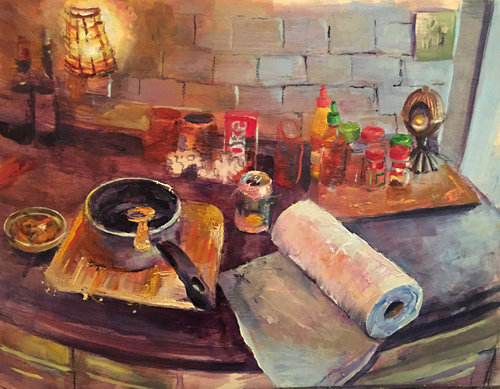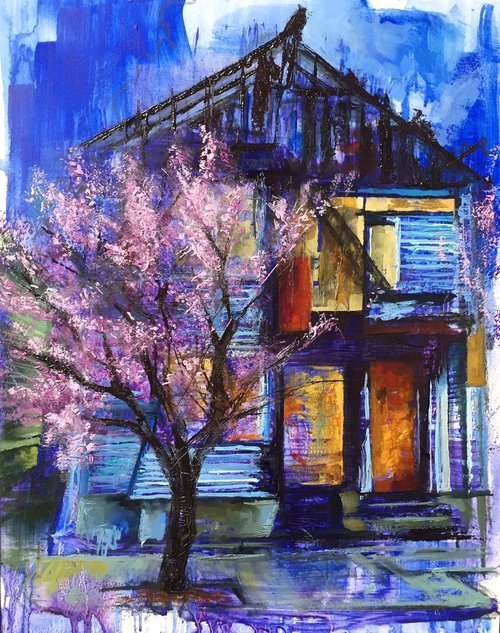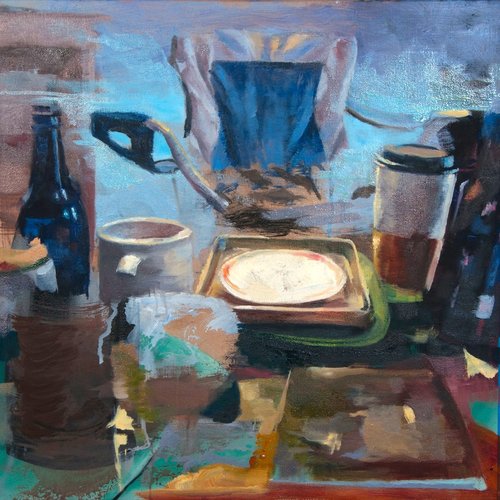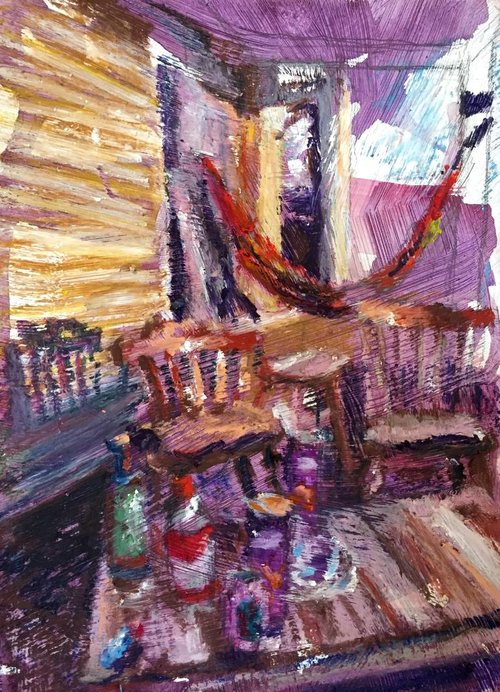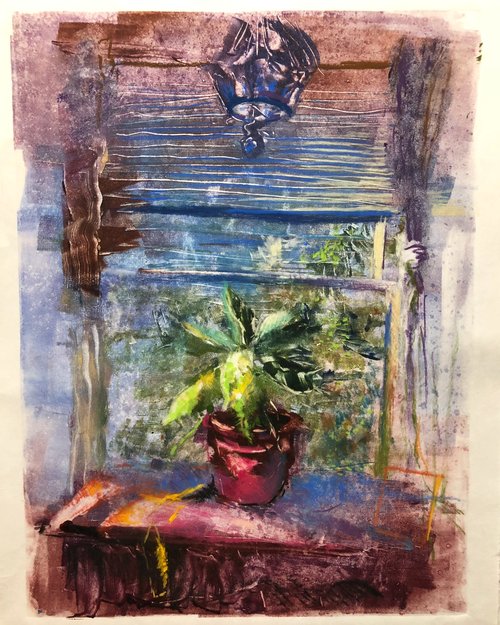Q1. Your subject matter of choice is the interior. How do you select the spaces you depict? What's the significance of these rooms?
A1. Most, if not all, of the spaces I have depicted hold some form of resonance with me. When I began on this interior journey, all of the spaces were either my first college apartment or friend's apartments. I explored everything in front of me, everything that held a memory and story. My work then evolved to a series recreating rooms of my childhood home both occupied and empty, acting as a form of therapy almost. My art changes and evolves with the passing of time, dependent on where I am and what significance that space holds for me.
Q2: The significance of these spaces is evident in the strength of their execution. Is there any significance to the emptiness of these spaces? Any particular reason your rooms are not populated?
A2. When figures are present in a painting, photograph, drawing, etc., a story is almost automatically formed in a viewer's mind and therefore hard to stray away from. I want the objects and spaces to act as the figures, giving them their own personalities. I want people to question why objects are where they are and to create ever-changing narratives. I like to think of my rooms as self portraits almost, with a suggestion of a presence.
Q3. In your paintings, you often mix acrylic and oil. Can you talk more about your painting technique and how you developed it?
A3. I found that I never liked to start on a white surface. Working off of a base of one or multiple colors helps me not only to envision a space more clearly, but also my value structure. The acrylic helps me achieve a drip-like base layer and go in without any restrictions. The oils allow me to bring the space to life with more vibrancy and texture. After my base layer of acrylics and before I go in with oils, I draw the scene and objects with charcoal. Almost 100% of the time I will leave much of the line work. I feel as though it helps enhance the feeling of impermanence, like one is looking at a fading memory.
Q4. It seems like your process is pretty additive then. Have you ever experimented with erasure in your work, or removing layers rather than adding them? And what role does editing play in your work?
A4. A big reason why I use charcoal when I am drawing out the scene is because of its ability to be wiped away and resurfaced again with ease. In printmaking I experiment more with the reductive process, which actually helps me more with value scale and allows me to think of my scenes differently.
Q5. You cite painters as varied as Édouard Vuillard and Antonio Lopez Garcia as inspirations. What are some commonalities among artists whose work you admire, and how have they influenced your work?
A5. Many of the artists I am inspired by were a part of "The Nabis" movement and some considered "Intimists", painting the everyday contemporary life. Many of their philosophies revolved around the idea of drawing emotion out of these everyday scenes and objects. I think that what connects all of the artists I draw inspiration from is their ability to take what some see as the mundane and create a more intimate story, "a window into the soul". Stylistically, I have always admired the Impressionists and their ability to use paint in a bold and vivid way that truly brings life to a painting.
Q6. In addition to painting, you create monotypes and other prints extensively. How does your work as a printmaker influence your painting and vice versa?
A6. Printmaking, monotypes especially, is a way for me to experiment more freely. A lot of my prints begin as the "thumbnails" for larger paintings, and then morph into their own personalities. There is an element of surprise and spontaneity in printmaking that I personally find more difficult to achieve in my paintings.
Q7: In your printmaking, you often work back into the scenes with pastel or other materials. Do you feel that this additional work on your prints continues the spontaneity that the monotype process starts, or does it become more controlled?
A7. I think once I go back into a print I automatically tend to become more controlled and think longer on my decisions. It also depends on what material I am using. For example, with pastels I tend to be more careful, but if I am using watercolor crayons I am more loose just due to the way the medium wants to act.
Q8. Can you talk more about the palate you use in your paintings? How do you manipulate color to influence the perception of the spaces in your work?
A8. My palate usually depends on the space I am recreating and I tend to rely heavily on intuition in the beginning stages. I am very intrigued by the psychology of color and how it can symbolize emotions. In order to feel the intensity of my emotions, I exaggerate most of the colors in the objects and walls, and enhance the feeling of it being a dream or memory.
Q9: You paint in a studio within your home. Does this ever pose a challenge for you? I’m thinking particularly of a great diptych of your bedroom. Does being so close to a space you’re painting make it more difficult to capture it in your style?
A9. There are definitely pros and cons to having a studio in the same space you live. A few years ago I rented out a studio with other artist friends separate from my home. I miss the social aspect of that the most, being able to hear other critiques and work creatively off of each other. However, for me personally, I like being comfortable in my own space and being so close to a lot of what I paint. If I need references from life, I can just walk out of my studio and it is all there.
Q10: What projects are you currently working on, and what’s next for you?
A10. Recently I have been experimenting with image transfers on different surfaces and layering materials. I am continuing my paintings and prints, evolving and learning as I go. I am also in the process of preparing for a show that I have at Temple Habonim in Barrington, RI so that has been keeping me busy and driving me to create more frequently.





















